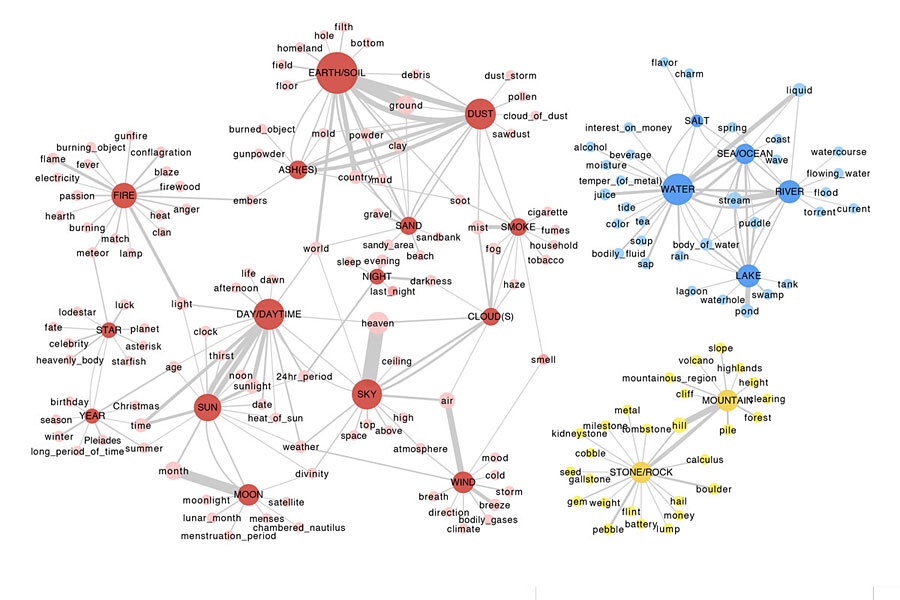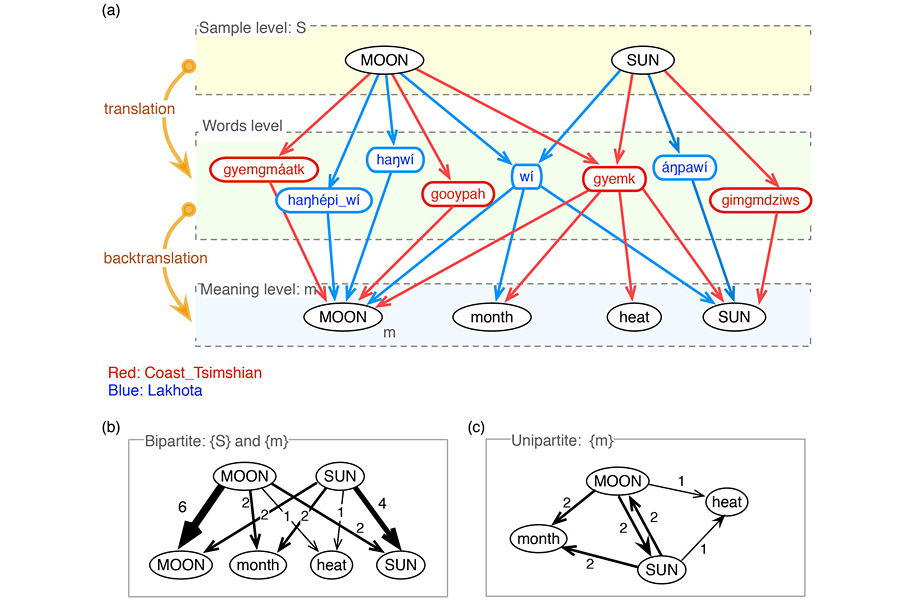Not so lost in translation: How are words related?
Loading...
Some words have dramatically changed meaning throughout the ages. Awful once meant impressed or filled with awe, a clue was once a ball of yarn, and being called nice wasn't always a compliment, having once meant foolish, silly, or ignorant.
But how does a word's definition change so drastically?
In an attempt to understand how words' meanings evolve, a team of scientists mapped out the relationships between different words and their meanings in a sort of linguistic snapshot, capturing the process in action.
If you've ever learned a new language or translated sentences from one language to another, you know that one word won't always translate perfectly into another. Some words even have multiple meanings, like the Hawaiian word aloha, which can mean both hello and goodbye.
The team of scientists used such words with multiple meanings, known as polysemous words, to create a semantic network, connecting words through these polysemous translations. The resulting web appears in a paper published Monday in the journal the Proceedings of the National Academy of Sciences.
"We had no idea how to represent the relationship between words and meanings, let alone how the meanings of words change," study senior author Tanmoy Bhattacharya of the Santa Fe Institute tells The Christian Science Monitor in an interview. So they looked for patterns among words in different languages.
First the team selected 81 languages across the globe. These languages were chosen across diverse historical, cultural, and geographical contexts.
"Most language studies are more focused on W.E.I.R.D. society, Western Educated, Industrialized, Rich, Democratic," study lead author Hyejin Youn, also of the Santa Fe Institute, tells the Monitor. But since the team was hunting for universal patterns, they chose languages that wouldn't have as much common ancestry or interaction.
The scientists used English as a meta-language. They selected 22 simple nouns like sun, sea, dust, water, and stone to use for simple translation. "We wanted to start with basic things first," Dr. Youn says.
Each word was translated from English to each of the 81 languages. Then, the resulting word or words were translated back into English. During that back-translation, some of the words acquired multiple meanings.
For example, Dr. Bhattacharya says, "You can start with the word sun" and end up with a whole bunch of words. "When you take these words and you translate them back, you get both sun and moon" in some languages.
This process of translation and back-translation ultimately produced a web of words. But not everything was strongly connected.
A web of the elements
"You can easily go from something like sun to something like star," Bhattacharya says. "But you'll be very hard-pressed to get to river."
When they looked at the data, the researchers found that the stronger links clustered words together into three major groupings. And these groupings line up somewhat with the classical elements of the natural world. Words relating to water formed one cluster while those linked to stone or mountain formed another. The third cluster was larger and encompassed multiple elements, connecting words such as dust with smoke, or sun with fire and wind.
"There seems to be universal structure across different languages in meanings at a certain level," Youn says.
Words and meaning in motion
How does this web of translations and back-translations highlight how words change their meanings through time? It has to do with how words work.
"Words label concepts," Youn says. "We need a word to express ourselves, communicate with others, but what is actually being communicated is meaning."
And culture is constantly changing, so those groupings of letters we call words may be remarkably dynamic too.
"Our sense that words are static things sitting in the dictionary with a meaning – or even meanings – that sit still is artificial," Columbia University linguist John H. McWhorter, who was not associated with the study, tells the Monitor in an email. "Rather, a word is a process, always on its way to becoming a different one."
So when these researchers mapped words in a modern semantic network, they captured a freeze-frame of that dynamic process.
"Words don't just change meanings randomly – rather, implications hanging over a word gradually become what the word means," Dr. McWhorter says. For example, "SUN implies HEAT. In a language, one might talk about getting some 'sun' in the meaning of warming up. After a while, in that language the word SUN may actually mean nothing but HEAT, something that would happen step by step, under the radar."
But during that process, "there's a time in the middle where a word has to mean both things," Bhattacharya explains. The goal of this research was to provide a model to use to ask questions about how words and their meanings change over time.
What's behind linguistic shifts and patterns?
The researchers looked at languages across far-flung regions, cultures and environments, thinking they might spot relationships between populations' experiences and their use of language. In that case, coastal populations would link the sea and salt while desert dwellers might not make that connection. But they found that that association was universal.
"There is a coherent conceptual space of meaning that transcends cultural and environmental factors," Youn says.
In other words, language isn't strongly wedded to environment.
"This study is showing that ... in all languages there are certain basic concepts despite how disparate human experience is, and that local culture is not the only thing shaping how a language works," McWhorter says.









